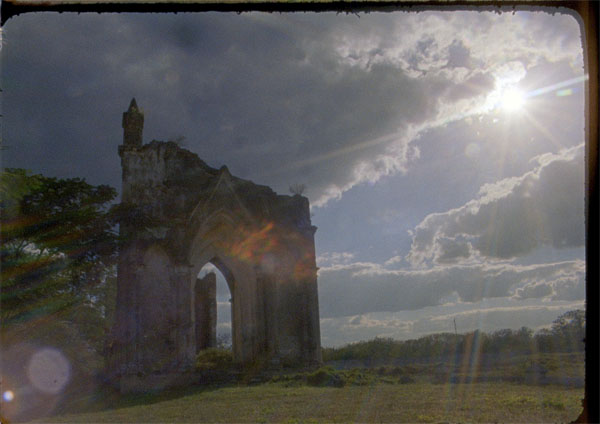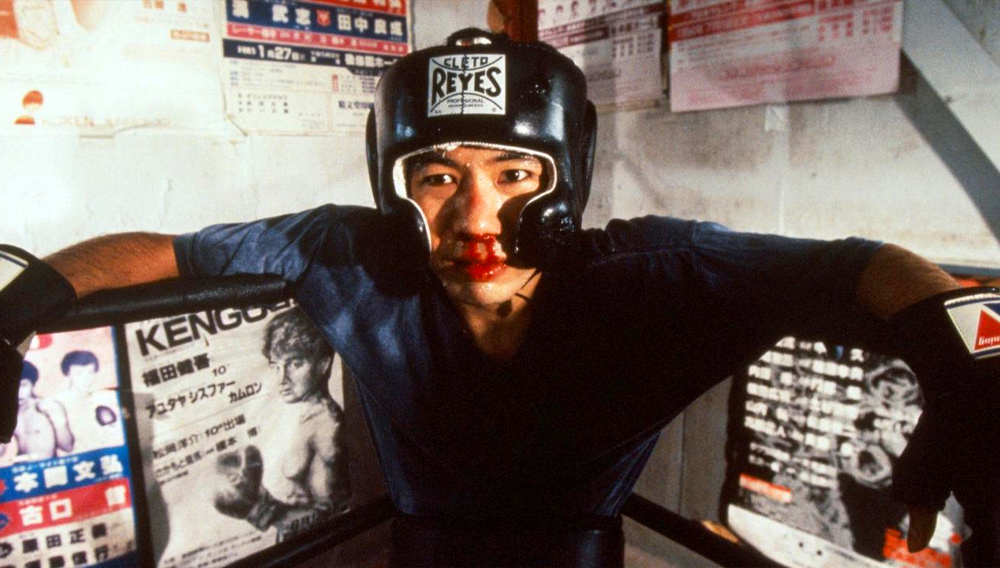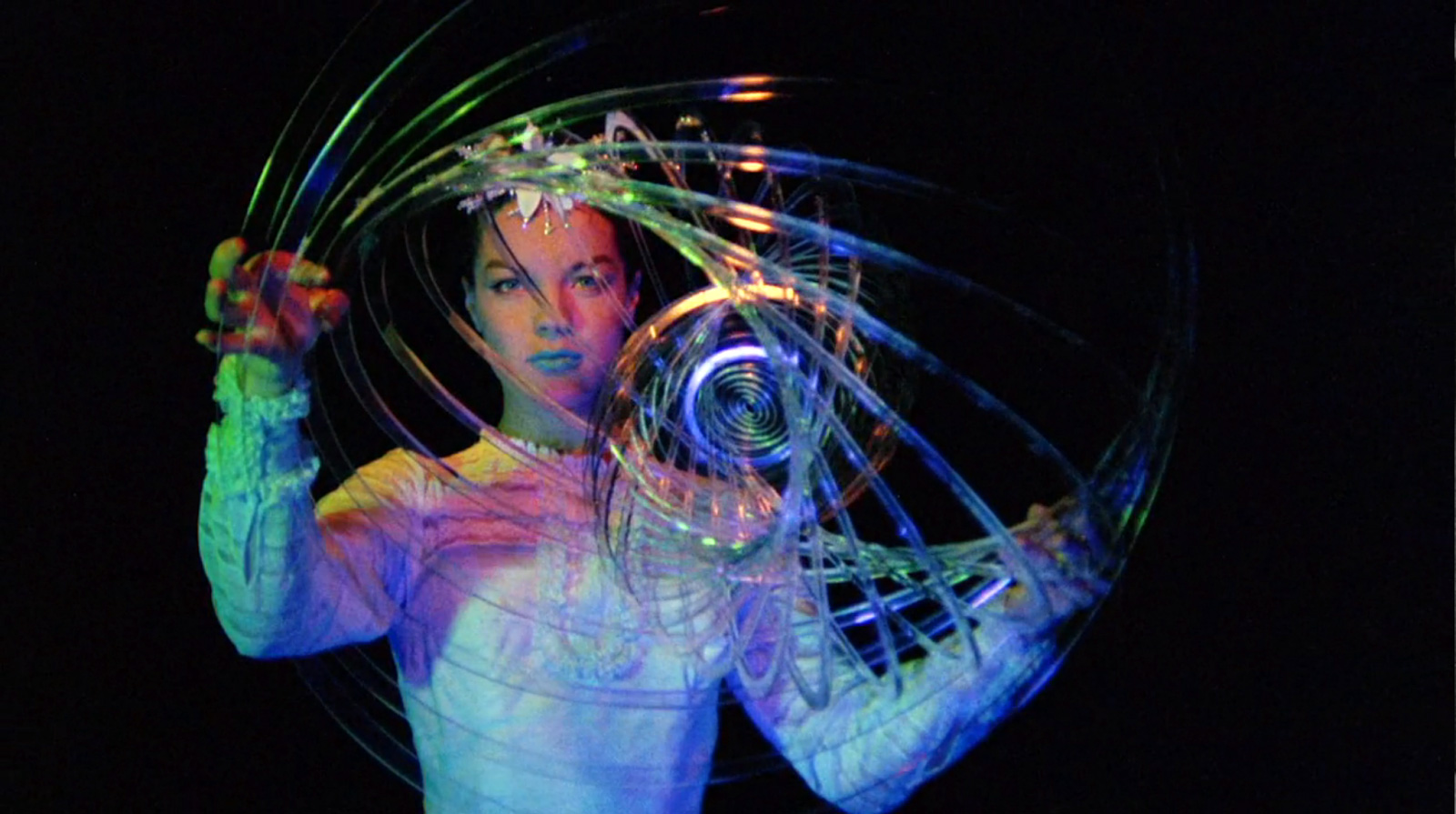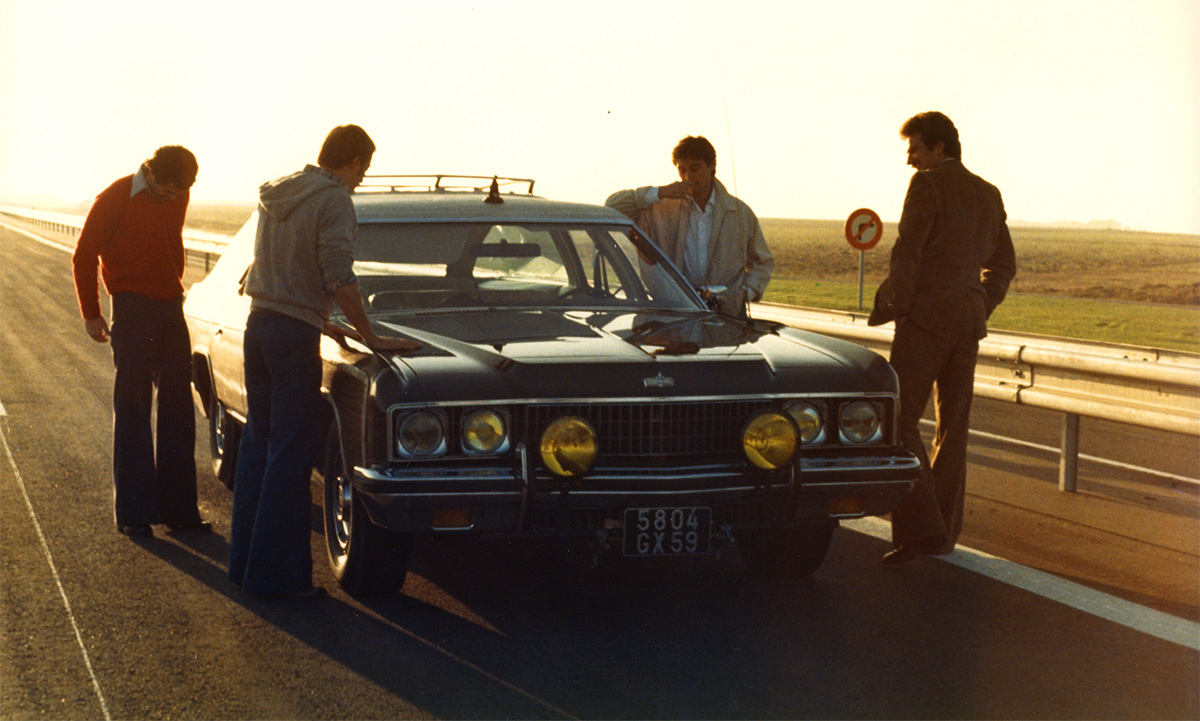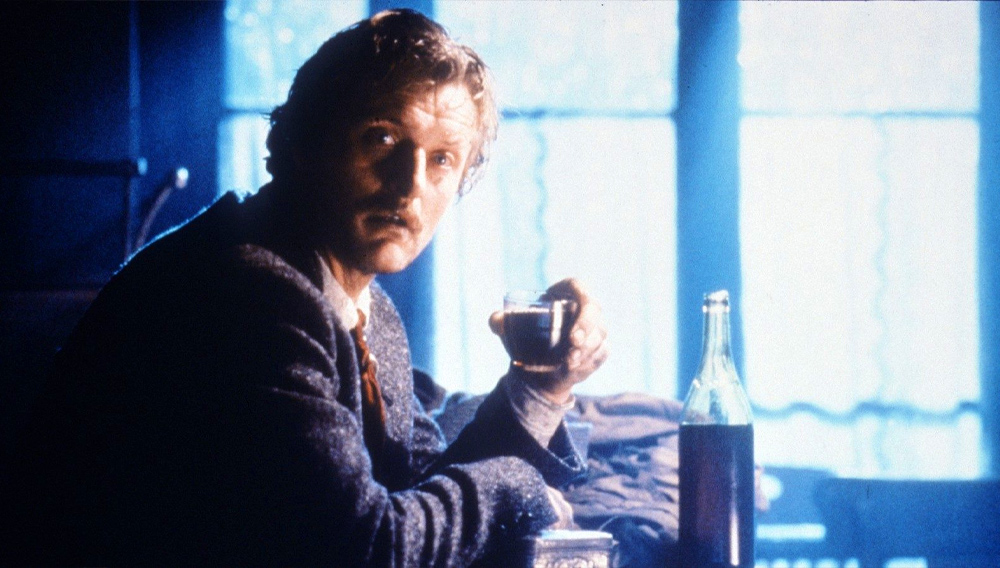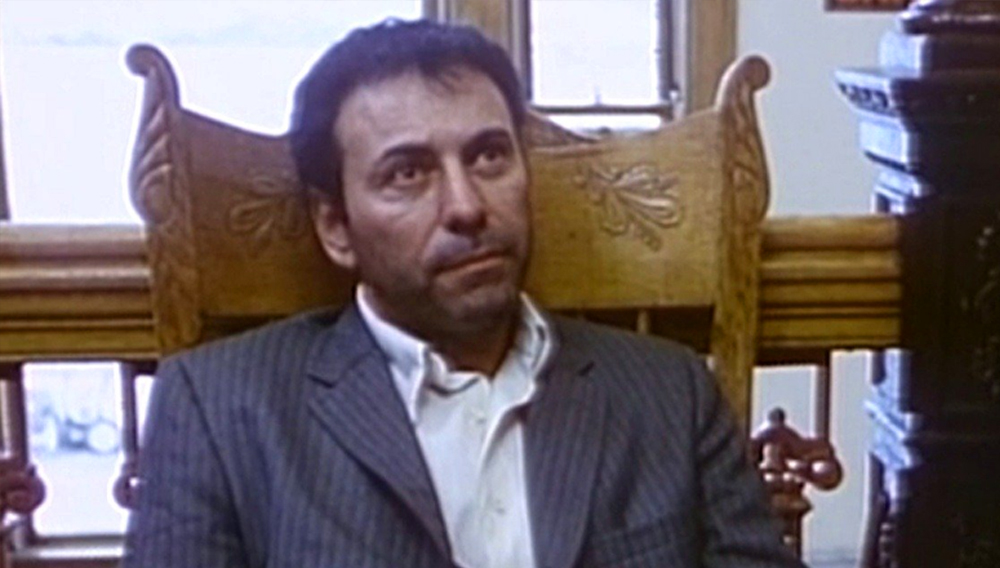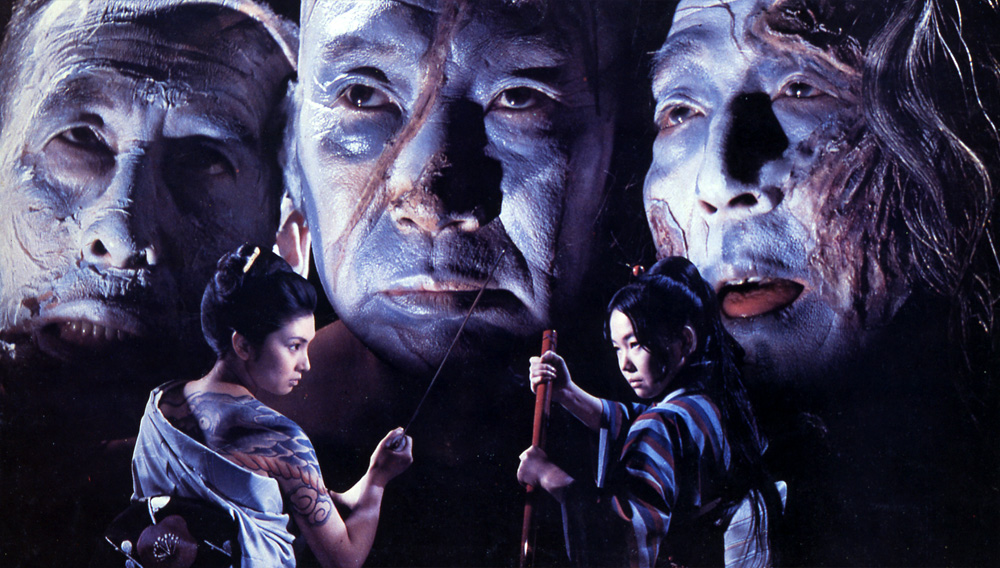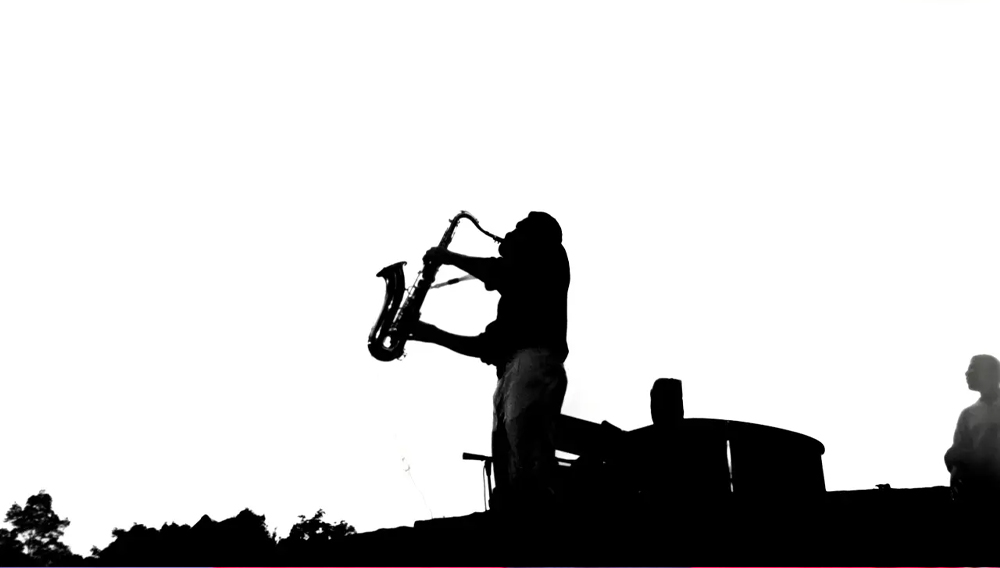A few days before this year’s Toronto International Film Festival opened earlier this month, Jason Anderson previewed the Wavelengths program for Artforum. Appropriately enough, he saved this bit here for his last paragraph: “An anarchic odyssey patterned in large part after Dennis Hopper’s The Last Movie (1971), Raya Martin and Mark Peranson’s La última película combines musings on the end of cinema as a celluloid-based medium with the fictional tale of a blowhard American director (played by bona-fide filmmaker Alex Ross Perry), who comes to Mexico to see if the Mayans were right about the end of time. Though this exercise in cinematic self-immolation could puzzle viewers who don’t already write for Peranson at his magazine Cinema Scope (myself included), the film compensates for its more wayward impulses with its caustic sense of humor and abundance of rapturous imagery.”
Jacqueline Valencia for Next Projection: “The film utilizes eight different film formats; interspersing them with various filters and tones to present a sort of deterioration of not just filmmaking, but the state of the materials used in film. Taking this as the background to the endless self-important, stream of consciousness style of dialogue coming out of Perry, it makes for a colorful portrait of film visuals and satirical portrayal of the process of filmmaking.” La última película “is a collage; it’s a portrayal; no, it’s a capricious and frustratingly provocative challenge that isn’t afraid to make fun of itself.”
“Equal parts invigorating and enervating, it implodes into a meta-travelogue of its own making,” writes R. Emmet Sweeney for the L. “One of the only features to screen on film at TIFF, its medium is also its message.”
“La última película scores some often savagely hilarious points against Alex’s pretentiousness, right down to Alex’s frequent tic of rubbing his facial hair in a pointed caricature of a certain kind of Brooklyn-bred hipsterism,” writes Kenji Fujishima at In Review Online. “Are we indeed losing a crucial way of seeing the world with the impending death of film? Even in the hands of these two unabashed pranksters, one can’t help but have a certain admiration for the sheer level of visual invention on display, especially when their ingenuity leads to come up with one of the more affecting epitaphs for 35mm in the form of a colorful image of Alex out at sea slowly draining of color in a way that suggests a flame burning down to mere embers of orange amidst a sea of black.”
Dennis Harvey in Variety: “From its very long false start of projection-focusing test graphics and several later ‘scenes missing’ to its impenetrably underlit sequences and jumble of shooting formats (from 8mm to iPhone), La última película means to be insufferable—albeit in a comic way—and succeeds a little too well.”
Filmmaker editor Scott Macaulay met Peranson in Toronto, where the co-director told him, “The Last Movie was supposed to be shot in Durango, Mexico, so this is making The Last Movie where it was supposed to be made 30 years later. But we’re also talking about the rhetoric [of that era], observing how that rhetoric and that kind of filmmaking had a kind of anarchic honesty or authenticity in 1971 but, by the time 2013 comes around has a kind of inauthenticity, or parodic element. We weren’t trying to make a parody but necessarily by the means of the situation and the humor Alex brought to the project a definite skepticism comes across. So, there is an attempt to deal with questions of honesty, authenticity and sincerity, but we knew that it would come across as insincere and inauthentic just because of the way people’s minds have changed from 1971 to 2013.”
“It seemed that there were as many manifestos as there were films in Wavelengths,” writes David D’Arcy for Indiewire, noting that Peranson presented three quotes at the screening in Toronto. From Isidore Isou: “All forms, aesthetic and social, move from a stage of amplification to one of decomposition… In the stage of decomposition, forms turn inward upon themselves and become self-referential. Forms fall from grace and from history. As a form decomposes, so does the life to which it once gave shape.” Guy Debord: “Boring is always counter-revolutionary, always.” And Dennis Hopper: “A creative act is to say, ‘Hey, I’m not going to hide in the closet any more—at least I’m going to be a witness to myself.'”
The press kit (PDF) features an essay by Phil Coldiron. Having screened in the Wavelengths program in Toronto, La última película now heads to Vancouver.
Update, 9/27: “The film is a hybrid of both Martin and Peranson’s filming styles,” writes David Davidson. “There are some similarities between La última película and Martin’s Buenas noches, España, which in a experimental register, with shifting film stock and industrial music, a young couple go off on a road trip, where they experience some really intimidate moments, as they go deeper into nature and visit some local tourist sights. The Peranson qualities come across by the film-within-the-film’s director who speaks at length about his lofty aims (though presented in a self-critical register), and the making-of quality of La última película that recalls Waiting for Sancho,” which is Peranson’s document of the making of Albert Serra’s Birdsong (2008).
Update, 10/13: “When melancholy manages to escape the clutches of Martin and Peranson’s intellectual comedy, the pay-off is quite tremendous,” writes Oggs Cruz. “La última película elucidates the flurry of emotions surrounding what was the cinematic apocalypse. It is best viewed as a relic from a recent past, a foregone era, an enigmatic museum piece. It is that bewildering but very enjoyable artifact of how all the talk on the state of cinema has become so absurdly serious and seriously absurd. With a wondrous marriage of self-importance and self-irreverence, La última película succeeds in being everything it sets out to be, an often frustrating but always joyous celebration of cinema.”
Toronto 2013 Index. For news and tips throughout the day every day, follow @KeyframeDaily on Twitter and/or the RSS feed. Get Keyframe Daily in your inbox by signing in at fandor.com/daily.

